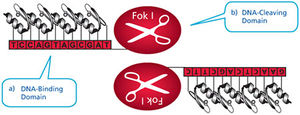User:A.guan610
Introduction
Meticillin resistant Staphylococcus aureus (MRSA) is a gram-positive cocci bacterium which has developed resistance towards not only meticillin as the name implies, but any β-lactam antibiotics. β-lactam antibiotics are a class of antibiotics which encompass the penicillin family whose effect is to inhibit peptidoglycan synthesis in bacteria. β-lactam antibiotics include penicillin and penicillin derivatives as well as carbapenems, monobactams and cephalosporins. MRSA is a growing problem – originating in hospitals around the 1960’s – as it causes serious disease such as bacteremia, pneumonia and meningitis (Qiao et al. 2013). These diseases are possibly fatal and hard to treat as antibiotic treatment becomes limited when the bacteria causing infection becomes resistant (Qiao et al. 2013). Another problem which arises with the spread of MRSA is the development of resistance to other antibiotics; currently, vancomycin is used to treat MRSA, however there have been documented cases of Vancomycin resistant strains of MRSA (Lowy et al. 2003). Patient prognosis for infection with MRSA with Vancomycin resistance is poor and often lack viable forms of treatment (Wang et al. 2013). This poses the problem of the emergence of a MRSA strain completely resistant to all antibiotics in current use.
Other examples:
Bold
Italic
Subscript: H2O
Superscript: Fe3+
Mechanism of Resistance
MRSA are resistant towards β-lactam antibiotics through a variety of mechanisms (Lowy et al. 2003). Βeta-lactams normally inhibit bacterial cell wall synthesis by inhibiting peptidoglycan elongation. They can produce β-lactamases which are extracellular degradative enzymes specific to β-lactams (Obajuluwa et al. 2010). They also encode a different penicillin binding protein (PBP) called PBP2a which can catalyze transpeptidase reactions for peptidoglycan synthesis even in the presence of β-lactams (Tawil et al. 2013).
Current Treatment for MRSA
Currently, antibiotics such as Vancomycin and Linezolid are used to treat MRSA infections (Puzniak et al. 2013). Although these antibiotics are usually saved for emergency situations as they are the remaining treatment for an otherwise antibiotic resistant bacterium (Vancomycin WIKI. 2013).
Possible future treatments for MRSA
Phage treatment
Include some current research in each topic, with at least one figure showing data.
Conclusion
Overall paper length should be 3,000 words, with at least 3 figures.
References
Edited by student of Joan Slonczewski for BIOL 238 Microbiology, 2009, Kenyon College.

